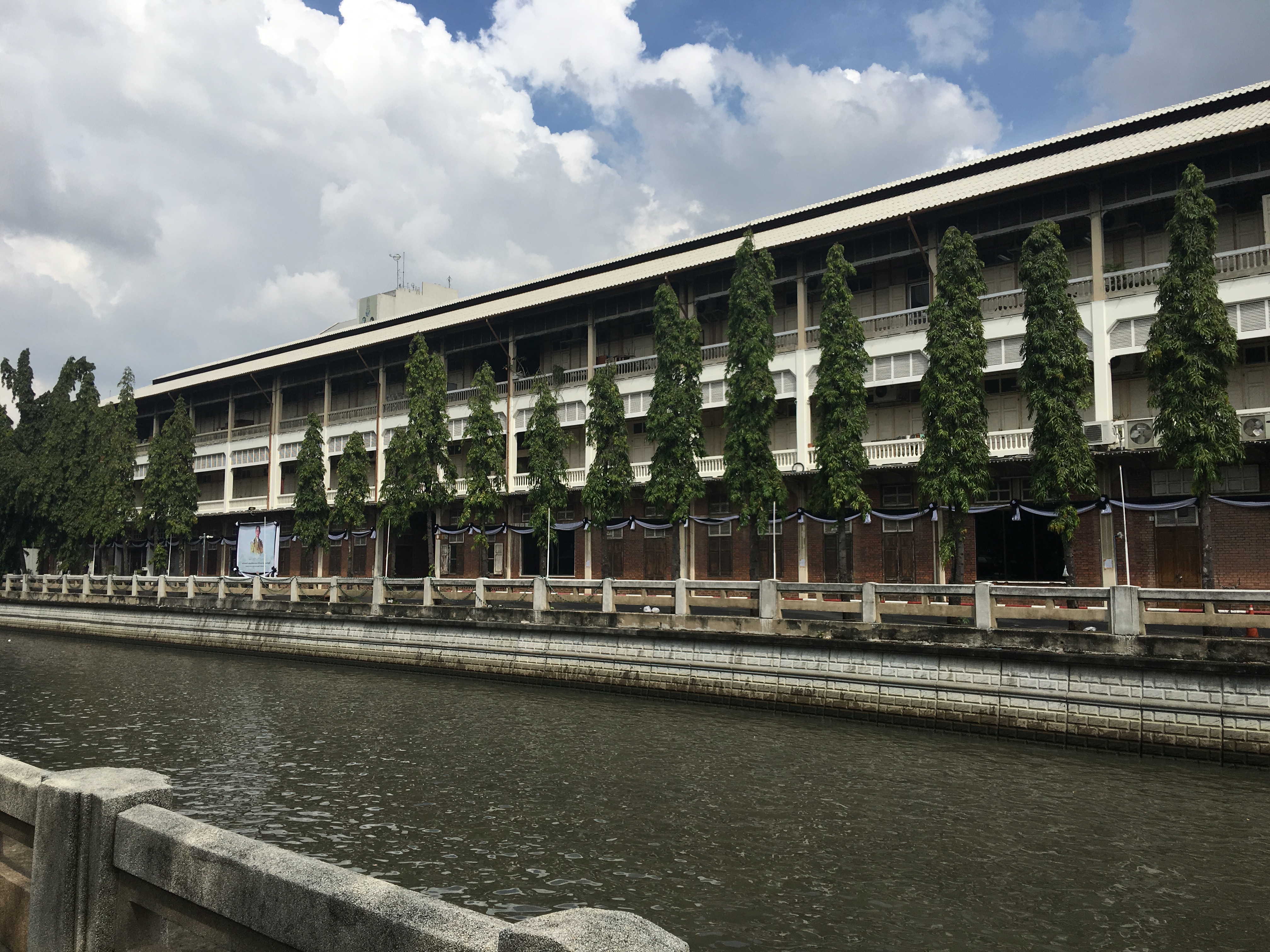Khlong Phadung Krung Kasem on:
[Wikipedia]
[Google]
[Amazon]
 Khlong Phadung Krung Kasem ( th, คลองผดุงกรุงเกษม, ) is a canal (''
Khlong Phadung Krung Kasem ( th, คลองผดุงกรุงเกษม, ) is a canal (''
Image:Bkkpadungkrungkasem03.jpg, View along Khlong Padung Krung Kasem
Image:คลองผดุงกรุงเกษม181.jpg, View along Khlong Padung Krung Kasem
 Khlong Phadung Krung Kasem ( th, คลองผดุงกรุงเกษม, ) is a canal (''
Khlong Phadung Krung Kasem ( th, คลองผดุงกรุงเกษม, ) is a canal (''khlong
A ''khlong'' ( th, คลอง, ), alternatively spelt as ''klong'' () commonly refers to a canal in Thailand. These canals are spawned by the rivers Chao Phraya, Tha Chin, and Mae Klong, along with their tributaries particularly in the low-ly ...
'') in Bangkok
Bangkok, officially known in Thai language, Thai as Krung Thep Maha Nakhon and colloquially as Krung Thep, is the capital and most populous city of Thailand. The city occupies in the Chao Phraya River delta in central Thailand and has an estima ...
. It was dug in 1851 in order to serve as a new outer moat for the expanding city, extending its boundaries from the Rattanakosin Island
Rattanakosin Island ( th, เกาะรัตนโกสินทร์, , ) is a historic area in the Phra Nakhon District in the city of Bangkok, Thailand. It is bordered by the Chao Phraya River to the west and various canals to the east t ...
to the north and east.
History
When the city of Rattanakosin (the formal name of the capital city today known as Bangkok) was founded by KingPhutthayotfa Chulalok
Phra Phutthayotfa Chulalok Maharaj (, 20 March 1737 – 7 September 1809), personal name Thongduang (), also known as Rama I, was the founder of the Rattanakosin Kingdom and the first monarch of the reigning Chakri dynasty of Siam (now Thai ...
(Rama I) in 1782, it was set within fortified walls, and Khlong Rop Krung
Rattanakosin Island ( th, เกาะรัตนโกสินทร์, , ) is a historic area in the Phra Nakhon District in the city of Bangkok, Thailand. It is bordered by the Chao Phraya River to the west and various canals to the east ...
was constructed as a moat to protect the city's eastern flank. The Chao Phraya River
The Chao Phraya ( or ; th, แม่น้ำเจ้าพระยา, , or ) is the major river in Thailand, with its low alluvial plain forming the centre of the country. It flows through Bangkok and then into the Gulf of Thailand.
Et ...
formed a natural barrier to the west. By the time of King Mongkut
Mongkut ( th, มงกุฏ; 18 October 18041 October 1868) was the fourth monarch of Siam (Thailand) under the House of Chakri, titled Rama IV. He ruled from 1851 to 1868. His full title in Thai was ''Phra Bat Somdet Phra Menthora Ramathibod ...
(Rama IV)'s reign, the city had outgrown its original area, and in 1851 the King ordered the digging of another canal, roughly parallel to the old moat, from Wat Thewarat Kunchon to Wat Kaeo Fa. The construction, headed by Chaophraya Si Suriyawong
Somdet Chaophraya Borom Maha Sri Suriwongse ( th, สมเด็จเจ้าพระยาบรมมหาศรีสุริยวงศ์, , ; also spelled ''Suriyawong'', etc.; 23 December 1808 – 19 January 1883), whose personal ...
, was completed the following year, and the King named the canal ''Khlong Phadung Krung Kasem'', roughly meaning "the canal upholding the city's happiness". As the political climate and military practices had vastly changed by then, defensive walls were no longer deemed necessary, although seven forts were nevertheless built along the canal (plus one on the western bank opposite the canal's mouth). The expansion more than doubled the city area, to . Reproduced in Gallery
See also
*History of Bangkok
The history of the city of Bangkok, in Thailand, dates at least to the early–15th century, when it was under the rule of Ayutthaya. Due to its strategic location near the mouth of the Chao Phraya River, the town gradually increased in importan ...
*Fortifications of Bangkok
The fortifications of Bangkok consist of several series of defensive structures built to protect the city during the late Ayutthaya to early Rattanakosin periods. The earliest structures were built when Bangkok was an outpost of Ayutthaya guard ...
References
{{coord, 13.7477, N, 100.5167, E, source:wikidata, display=title Phadung Krung Kasem, Khlong History of Bangkok Registered ancient monuments in Bangkok